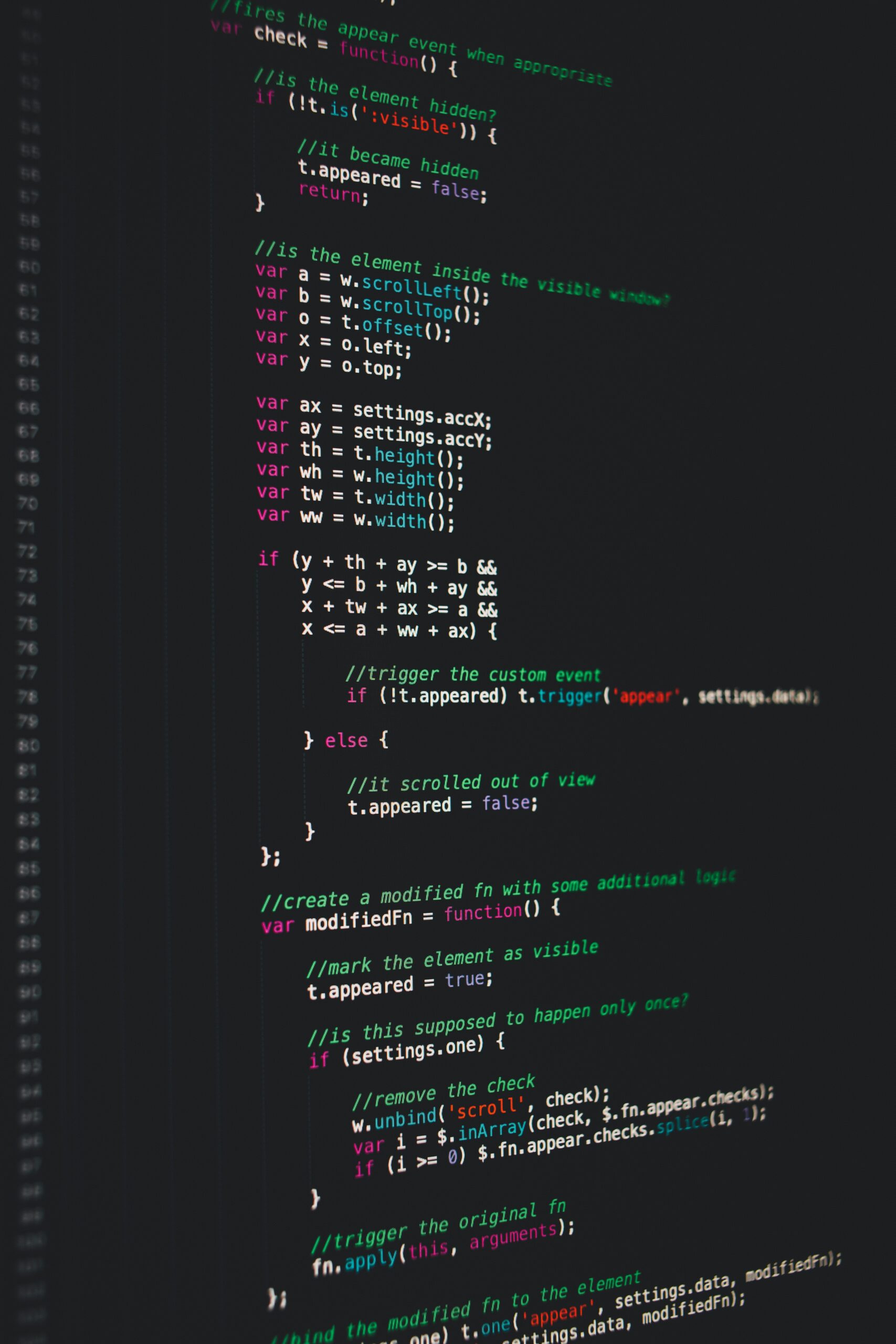
Putting the AI in retail (Yes, there’s an a and I in retail)
Last week my two World’s collided when on Wednesday, the Association for Computing Machinery, the world’s largest society of computing professionals, announced three winners of the Turing Award for their work as pioneers in Artificial Intelligence. And I spent two days holed up in Miami with some of the US’s top retail analytics gurus, when all we talked about was applying AI in Retail. Indeed we put the AI in Retail. My week was all AI- this and AI-that…
AI has become the new buzzword in Retail. Whichever retail conference you attend or retail trade magazine you flick through, AI is everywhere. It seems that AI is the solution for any challenges that retail faces today. Actually, a lot of the time, folks just mean advanced analytics not AI. And advanced analytics, and analytics tools are finally realising their promise in retail.
In reality, the application of AI in retail is much more nuanced than what it is thought or perceived to be. For example, if the objective is increasing “efficiency”, e.g. labour optimisation, sales forecasting etc. it is highly unlikely that a retailer will gain long-term competitive advantage by using AI. It is likely to be more short-term gains in efficiency, which all retailers need to adopt anyhow. Consequently, for these kinds of “use cases” for AI, it is not worthwhile for the retailer to invest in developing their own AI solutions. It might make more sense for a retailer to subscribe to a multi-client vendor solution.
Examples of these kinds of efficiency driven use cases of AI can be the following:
- Demand forecasting, inventory management, forward planning of stocks, eliminating overstocks and out-of-stocks: For example, European apparel retailer H&M uses AI to analyse store returns, receipts, and loyalty cards to predict future demand for apparel and accessories and manage inventory. Another example is UK supermarket Morrison’s who use AI to optimise stock forecasting and replenishment across 500 stores. The use of artificial intelligence helped Morrison’s to reduce OOS by about a third
- Basic communication capabilities to answer simple questions around stock, colour and fit: For example,, apps and chatbots can support a customer both in physical and online shopping modes. Tommy Hilfiger has already launched AI-driven bots on Facebook Messenger in the US that guides customers through its latest collections and answers their queries
- Labour management to better match labour where it can deliver the greatest advantage (e.g. tills, shelves, customer service, back room etc.): UK retailer Marks & Spencer has teamed up with Microsoft to bring AI to labour rosters
- AI vendors are already developing multi-client retail solutions covering sales and CRM applications, customer recommendation engines, logistics and delivery, and payment services
- AI is relatively new in retail and is often found in pilots and proofs of concept. These initiatives are often led by functional leaders (e.g. HR, Supply Chain, Marketing) signing up outside vendors rather than being driven by the CIO, Head of Analytics or other senior personnel in the retailer’s existing analytics or technology functions. Because the components of AI systems exist in many functions, many individuals stake a claim on AI (e.g. data analytics, CIO, business functions etc.). Our research clearly highlights that AI is a broad stretch across disparate topics, which prohibits a Chief AI Officer to be credible across all possible applications
- The question of how to organise around AI depends on the maturity of the business. In the early stages of AI maturity, business function leaders drive their own use cases. This entails that AI is close to the benefit cases proposed to company boards. However, with time (just like with advanced analytics) there will likely be a duplication of skillsets across multiple units. Our prediction is that in the medium term, future AI initiatives will reach such a critical mass that it will become imperative to organise around a hub-and-spoke model – a centralised AI team serving multiple business functions with local commercial expertise close to the application
However, for “effectiveness”, retailers can create sustainable advantage by building their own AI solutions, which are tailored for different situations. Some examples of such use cases are:
- Localisation, for example managing and using weather information, events, catchments, types of competition, different SKUs and different price points to create advantage: Using e-commerce data to map to catchment to create richer insights
- Real time price optimisation based on competitor actions and demand triggers like weather: For example for beer, the price elasticity increases with higher demand in hot weather, allowing a retailer to make more money by reducing prices (and not by increasing them) and harvesting profit from the higher demand
- SKU mix optimisation (for example the best possible range): Many retailers are now using AI to “attribute” SKUs with characteristics beyond the usual size and colour, to build optimal ranges. OC&C has worked with an apparel retailer using machine learning to create the optimal master range. It was building bottoms up from different store types to arrive at the best mix of attributes to create the range
- Experiential retail offering tailored offers for individual customers:, Augmented Reality store guides are emerging, and these can use AI to direct you to the most appropriate products in the store. Visual search has the ability to significantly improve customer experience. For example, AI has opened up visual search to retailers as well, allowing customers to upload images and find identical or similar products. AI-powered technology scrutinises an image and analyses colours, shapes, and patterns to identify an item. UK retailer John Lewis has added this technology to their iPad app. Given that bricks and mortar have the opportunity for a sales “assistant” to assist you, some retailers have sought to capitalise on this, e.g.; John Lewis spent £4 million in 2017 on a shop floor app for its personnel. This AI powered app equips employees with information about products and stock availability so they can better answer fuzzy questions from shoppers in-store
- AI powered checkout free stores: Robotisation of stores reduces queues, reduces the number of shop floor level employees, and dramatically reduces operational costs for a retailer. Amazon’s artificial intelligence has enabled checkout-free stores. The Amazon Go app along with Just Walk Out Shopping technology automatically monitors a customer taking from and returning products to shelves. Similar or more advanced technologies will eventually follow, because getting “checkout free” right is incredibly difficult. We think that this capability will only be pursued by major retailers, who see it as a disruptor
Overall we see retail as an industry, which is likely to be significantly impacted by AI. But it is an expensive arms race. Retailers would need to choose where AI is just table stakes and they can do minimum investment in off the shelf solutions, and where can they double down and bet big. These would be when they think developing their own bespoke AI solution is worth the investment to create significant and sustainable competitive advantage.
Retail leaders need to educate themselves about the power of advanced analytics that drive AI. AI systems and the advanced analytics that power them are data hungry. To be an AI winner, you first need to build your data infrastructure. Building a strong data foundation is a necessary first step while building AI capabilities. Sainsbury’s, a supermarket chain in the UK, has invested heavily in big data infrastructure and data management. The lack of right data can be a significant barrier to business adoption of AI. One of the most important steps while enabling AI is for retail executives to understand the amount and nature data already existing in their organisations.
Retailers investing in AI are seeking to enrich their own data by buying – or partnering – to obtain additional data sets. This increased value of data will result in even more intense competition to acquire it. In turn, this will solidify the role of large technology companies like Amazon, Apple, Alphabet, Facebook and others as harvesters and providers of data services. Taking it one step further, data partnerships will become commonplace as harvesting of data requires reach and infrastructure, which is prohibitively expensive for small or industry-focused companies. However, in OC&C Let’s Get Real About AI research, retailers repeatedly highlighted that using only external resources to create AI capabilities is less successful compared to when AI is built on a foundation of existing analytics capabilities.
Will AI lead to loss of jobs? In retail, the chances are very high. More importantly it will lead to changes in job definitions and part functions or responsibilities of some jobs will be lost. Retail employees based both in-store and in corporate offices will see their role descriptions pulled apart and reconstituted. This will result in employees having a proportion of their job roles taken over by AI with new responsibilities assigned to them. Expectedly, with the changes in job descriptions, new teams will emerge in retail businesses with altogether different roles and responsibilities.
The biggest challenge posed by AI (if it is actually impactful) will be the questions raised on retail organisational design and decision-making powers of executives. One executive from a respected retailer recently told us that their AI tools could take an integrated view of pricing, range, promo, marketing, forecasting and inventory management. The “brain” of AI can ask whether it is more beneficial to invest in pricing or promotion. Alternately it might ask whether it is more optimal to reduce marketing spend and spend more on quality control. It can come up with multiple scenarios of buying volumes and can suggest integrating forecasting into pricing and range decisions. But who takes all these decisions now?
Currently in retail organisations these decisions sit within different teams headed by different executive groups. AI’s impact is not going to be limited to redefining job specifications, but also organisational level decision-making.
And what happens to the laggards, those frozen in time like blacksmiths on the M25?
“The lion tamer’s whip doesn’t crack anymore,
The lions they won’t fight and the tigers won’t roar.”
Death Of A Clown – Dave Davies, Ray Davies
Contacts clés

James Walker
Partner



